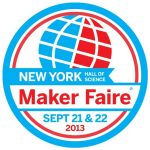The Personal Manufacturing Climate
I’ve been involved in the personal 3D printing scene for almost 7 years now and have had the opportunity to see it go through a variety of stages in its lifecycle. When I first got hooked on the idea, there were no pre-packaged kits, no instruction manuals, and barely even any documentation on the concept itself. The term 3D printing was just starting to become commonplace in industry, but almost no one associated this idea with anything more than a $100,000 toy that big companies had the privilege of using to create fancy intricate models that would have been difficult to create using traditional CNC machining techniques. Look how far we’ve come in a mere 10 years!
As the idea started to take off, people were eager to make contributions in any way they could. This quickly became a collaborative effort with different people from all over the globe producing tools that would hopefully move individuals closer towards the personal manufacturing dream. While this rapidly accelerated the development timeline, it had the potential downside that each of these tools was developed by a different individual with different assumptions, different coding styles, and even different programming languages. In the end we were left with a shotgun spread of slicers, hosts, and firmwares – disconnected and confusing (for those of you who may still be learning, the slicer is the tool that takes 3D models as input and creates the Gcode toolpaths to create the part. The host sends these instructions to the machine and monitors the build progress while the firmware interprets these instructions and takes the appropriate action to control the motors and heaters).
It was clearly a challenging problem, and it’s likely that it wouldn’t have succeeded without all the significant contributions that were made during that time. However, as we move into the present, 3D printing is starting to become a common term in the technology industry. We have a wide variety of individual systems available for purchase under $2,000. Just this year, one of these kits won the “Best Emerging Tech” award at CES (congrats Bre!). The big commercial giants have even started releasing consumer level products, something that was unheard of for this technology just 3 years ago.
It’s an exciting time for all the hobbyists, tinkerers, educators, designers, engineers, hackers and makers our there. The tools we are going to have available within the next 10 years will significantly change how products are designed and created. I consider it a privilege to have been a part of that journey for the last 7 years, and I look forward to what the next decade will bring!


